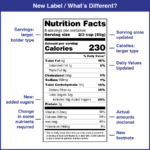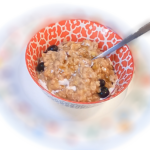Beginning the transformation for good health begins with properly stocking the pantry. My daughter once asked how do I keep my kids from eating junk all the time. I replied simply, “They will only eat what you buy.” Same goes for adults. If it is not available at home it is less convenient to eat the crap.
1. Purge Before the Surge
Before you even think about restocking your pantry with healthier choices, and better organize the shelves. Inspect each item you might want to keep. Read the nutrition facts label and make sure the percentages of the recommended daily allowance (RDA) is reasonable and not too high. For example, keep in mind the total RDA for ADDED sugar is less than 35 grams per day. The daily RDA for sodium is 1 teaspoon. Think about donating unexpired, unopened foods if they have undesirable ingredients,
2. Stock Up
Here is a list of items to consider for stocking your pantry. Starred items are highly recommended. Consider you will not purchase ultra processed foods (UPFs) going forward so the grocery bill will change. Shopping will change as the center isles are avoided and the outer edges are the focus. Vegetables, fruits, cheeses and dairy, and meats are around the edge of the supermarkets.
Whole Grains & Starches:
Oats: 100% Rolled oats for breakfast or baking. Not instant or quick oats. Make sure ingredients are 100% rolled oats.
Rice: Brown rice, wild rice, quinoa, and other whole grains provide protein, fiber and nutrients.
Pasta: Whole wheat pasta, lentil pasta, or other gluten-free options like brown rice pasta. Invest in a rice cooker for easier cooking, and try mixing 3/4 c. brown, 3 tbsp. wild, and fill rest of cup with white rice with 2 c. water.
Flour: Whole wheat flour, oat flour, or gluten-free options like almond or coconut flour.
Legumes & Canned Goods:
Canned beans: Black beans, chickpeas, kidney beans, lentils, and other beans offer protein and fiber. Bagged dry beans are more economical but less convenient. Start with the canned beans.
Canned fish: Wild-caught salmon, tuna, and sardines are great sources of omega-3s.
Canned tomatoes: Diced tomatoes, crushed tomatoes, and tomato paste are versatile for sauces and stews.
UNSWEETENED Coconut milk: A good dairy-free alternative for cooking and baking.
Canned or dried fruit: Look for options with no added sugar or sodium.
Low-sodium broths: Great for adding flavor and nutrients to meals. Aim to make your own broths.
Nuts, Seeds & Healthy Fats:
Nuts and seeds: Almonds, cashews, walnuts, chia seeds, flaxseeds, and pumpkin seeds are good sources of healthy fats and nutrients.
Nut butters: UNSWEETENED Peanut butter, almond butter, and other nut butters are great for snacks and sandwiches.
Cooking oils: Extra virgin olive oil, avocado oil, coconut oil, or ghee.
Other Essentials:
Dried fruit: Raisins, cranberries, apricots, and other dried fruits can be a healthy snack or addition to meals. However, craisins and dried cherries have a high added sugar content. Read the labels.
Spices and herbs: Garlic powder, onion powder, dried herbs or blends (basil, oregano, rosemary), cinnamon, paprika. A variety of spices and herbs can add flavor and depth to your meals without relying on salt or sugar.
Vinegar: Apple cider, balsamic, wine, or rice vinegar can be used in dressings and marinades. Start with apple cider and balsamic.
Baking essentials: Baking powder, baking soda, and sweeteners like honey or maple syrup. Date sugar, coconut sugar, and date syrup are good lower glycemic sweeteners.
Evaporated Milk, unsweetened: Consider using evaporated milk in your coffee instead of cream or half and half. Evaporated milk contains 6.5% milkfat vs. ~14% in half and half vs. 36% in cream. Per tablespoon.


